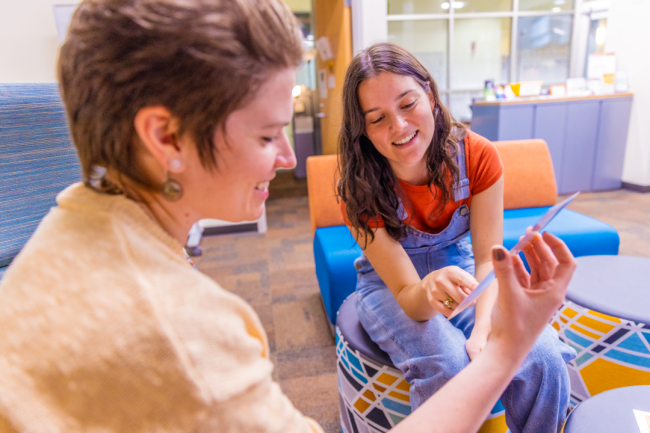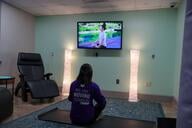You have /5 articles left.
Sign up for a free account or log in.

The University of Texas system is expanding interventions available to its learners across 14 campuses with digital partnerships.
The University of Texas system
Addressing student mental health needs remains a top priority among higher education leaders, but identifying solutions remains a challenge. The University of Texas has taken a systemwide approach to serving its more than 243,000 learners across the state, recently investing over $16 million in digital services and resources.
UT leaders share that implementing a systemwide rollout requires on-the-ground leadership, a top-down mission and a financial commitment from the board.
What’s the need: Students expect a high level of care from their institution in regard to their mental health, according to a May Student Voice survey from Inside Higher Ed and College Pulse.
However, most on-campus counseling resources cannot accommodate all students who seek care due to large case numbers. Teletherapy and self-help resources can aid in lifting the burden off college counselors and getting in front of a student crisis.
UT Austin, for example, has seen a 10 percent increase in students presenting for services in the counseling center every year over the past decade pre-pandemic, says Chris Brownson, associate vice president for health and well-being at the university. “You have to be finding new ways of bringing on extra services and whatnot, because we were already struggling to meet the increasing demand.”
Finding a solution: The University of Texas Board of Regents budgeted $16.5 million over the next five years to enhance student mental health, safety and alcohol and drug education among other wellness initiatives across the system, adding to a $28 million budgeted in the past decade.
Brownson has led the implementation of health and well-being initiatives across the system, and he strives to support each campus as staff cater to their unique geographic and population needs.
“One of the things that I had been trying to figure out is, how can we find ways to increase access for the students on the different campuses to the already-existing mental health resources that the different campuses are already offering?” Brownson says.
Across the system, the greatest need was more access to counseling and psychiatric resources for students, Brownson says and “after the pandemic, it became clear that virtual counseling was going to be something that, in some respects, is here to stay.”
A 2022 survey from the Association for University and College Counseling Center Directors found 22 percent of centers contracted with a vendor for teletherapy services to manage demand. A recent Student Voice survey from Inside Higher Ed and College Pulse found around 11 percent of respondents used telecounseling provided by their college, and around 5 percent of respondents only used telecounseling and not on-campus counseling.
As a result, the UT system partnered with Fort Worth–based provider TimelyCare after a competitive bid for its offerings, which include on-demand support, scheduled counseling sessions, psychiatry services, personal health coaching and other digital self-care content.
“This partnership is augmenting the already robust and existing services that we have, and we’re trying to find every way possible to make these resources accessible and available to students,” Brownson says.
The initial contract runs through Aug. 31, 2028, and the system has allocated approximately $15 million over the next five years, or 90 percent of the mental health budget.
For many institutions, identifying funding remains a barrier to supporting student mental health initiatives. UT chancellor James B. Milliken says there’s “never been any hesitation” from leadership. “Our board has been enthusiastically supportive every time we have taken a major investment to them.”
In addition to telehealth services, UT will add a mental health crisis line, web-based alcohol education and sexual assault and harassment prevention, and training for students and continue to fund the Thrive at UT mobile app. Faculty and staff will receive training and web-based education, as well.
A systemwide approach: When implementing new solutions, Brownson always takes the approach that “the local campuses are the experts,” he says. “They know the culture, they know the people, they know the different student demographics, they know what’s going to work best on their campus.”
The systemwide team is responsible for contracts, vendor relations and assisting in navigating the program, but it must be owned and managed by campus staff, who will promote the service to faculty, students, staff and parents.
“We’ve found time and time again, this is how these things work best, because then they can tweak it, they can shape it, they can do it in a way that they know is going to set it up for success on their campus,” Brownson says.
Programs will soft launch this summer with the whole system implementing telecounseling by the fall. UT remains committed to evaluation of program outcomes and research, as well as individual campus feedback, which will inform the next investment of time and resources, Brownson says.
If your student success program has a unique feature or twist, we’d like to know about it. Click here to submit.








